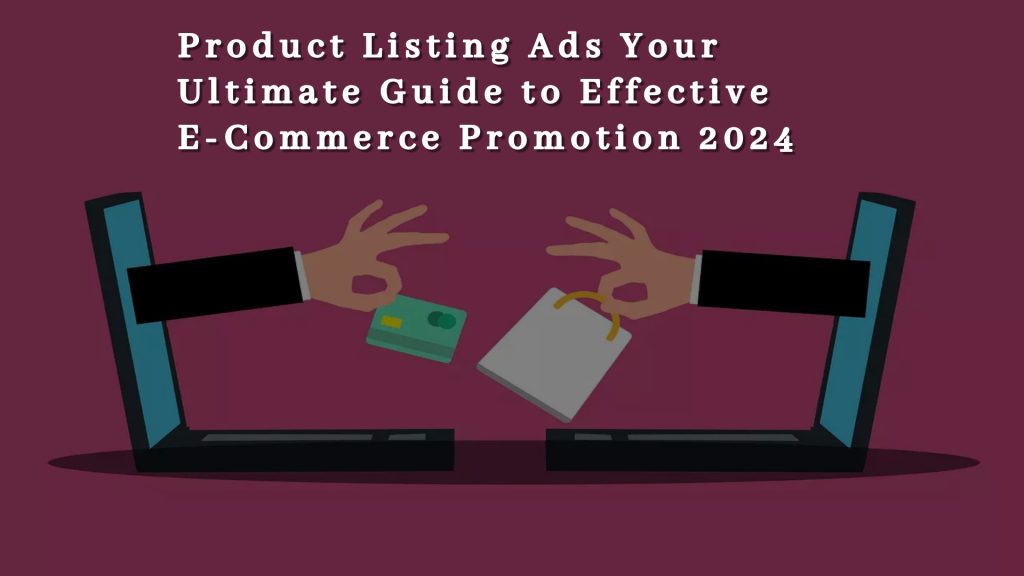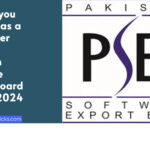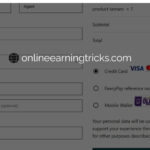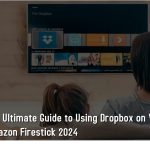
Table of Contents
Introduction: Welcome to the World of Product Listing Ads
Picture this: you’re scrolling through your favorite online marketplace, hunting for the perfect pair of shoes or the latest tech gadget. Suddenly, amidst the sea of search results, eye-catching images of products with enticing prices pop up at the top of the page. These, my friend, are Product Listing Ads (PLAs) – the digital shop windows of the e-commerce world.
In this guide, we’ll take you on a journey through the realm of Product Listing Ads. From understanding what they are to mastering their potential, buckle up as we explore the ins and outs of this powerful e-commerce tool.
Unraveling the Mystery: What are Product Listing Ads?
Product Listing Ads, commonly known as PLAs, are a type of online advertising format utilized by e-commerce businesses to showcase their products directly within search engine results. Unlike traditional text ads, PLAs display product images, prices, and business names, making them highly visual and engaging for potential customers.
In essence, PLAs serve as virtual shop windows, allowing businesses to prominently display their products to users actively searching for similar items. These ads appear primarily on search engine results pages (SERPs) and are a key component of many e-commerce marketing strategies.
The Power of Visual Appeal: Why Product Listing Ads Matter
In today’s fast-paced digital landscape, catching the attention of potential customers is more challenging than ever. This is where the visual appeal of Product Listing Ads comes into play. Unlike text-based ads that rely solely on persuasive language, PLAs leverage compelling imagery to captivate audiences at first glance.
Imagine you’re in the market for a new smartphone. You enter a search query, and instantly, a carousel of sleek, high-resolution images showcasing various models appears before you. Within seconds, you’re drawn to the vibrant displays and innovative features, compelling you to explore further. This is the power of visual storytelling that PLAs offer to e-commerce businesses.
By harnessing the visual allure of PLAs, businesses can elevate their online presence, differentiate their products from competitors, and effectively engage with their target audience. In an era dominated by short attention spans and information overload, captivating visuals serve as a gateway to capturing consumer interest and driving sales.
Decoding the Anatomy of Product Listing Ads
To truly harness the potential of Product Listing Ads, it’s essential to understand their underlying structure and components. At their core, PLAs consist of several key elements designed to provide users with relevant information at a glance.
First and foremost are the product images, which serve as the primary visual hook for potential customers. These images should be high-quality, visually appealing, and accurately represent the product being advertised. Whether it’s showcasing a stylish handbag or the latest electronic gadget, compelling imagery plays a pivotal role in capturing user attention and driving clicks.
Accompanying the product images are essential details such as product titles, prices, and business names. These elements provide users with vital information about the product being advertised, helping them make informed purchasing decisions without having to navigate away from the search results page.
Mastering the Art of Product Feed Optimization
Behind every successful Product Listing Ads campaign lies a well-optimized product feed – the backbone of your e-commerce inventory. A product feed is essentially a structured data file that contains information about the products you wish to advertise, including attributes such as product titles, descriptions, prices, and availability.
Optimizing your product feed is crucial for ensuring that your PLAs appear prominently in relevant search queries and reach the right audience. Start by ensuring that your product data is accurate, comprehensive, and up-to-date. This includes providing detailed product descriptions, specifying product attributes such as color and size, and ensuring that prices and availability are always current.
Additionally, optimizing your product feed involves strategically incorporating relevant keywords and product identifiers to improve visibility and relevance. By aligning your product feed with the search intent of your target audience, you can increase the likelihood of your PLAs appearing in front of users actively seeking your products.
Cracking the Code: The Importance of Keyword Strategy
In the ever-evolving landscape of digital advertising, a robust keyword strategy is the cornerstone of any successful PLA campaign. Keywords act as the bridge between user intent and your product offerings, ensuring that your ads are shown to users actively searching for products similar to yours.
When developing your keyword strategy for Product Listing Ads, focus on identifying high-intent keywords that align closely with your products and target audience. Conduct thorough keyword research to uncover relevant search terms, long-tail keywords, and product-specific phrases that reflect user intent and purchasing behavior.
Furthermore, consider leveraging negative keywords to refine your targeting and prevent your ads from appearing in irrelevant search queries. By continuously monitoring and refining your keyword strategy based on performance data and market trends, you can optimize your PLA campaigns for maximum effectiveness and ROI.
Navigating the Complexities of Bid Management
In the competitive landscape of online advertising, effective bid management is paramount to the success of your Product Listing Ads campaigns. Bidding strategies determine how much you’re willing to pay for each click on your ads and play a significant role in determining ad placement and visibility.
When it comes to bid management for PLAs, there are various strategies and approaches to consider. Whether you opt for manual bidding or automated bidding solutions, the key is to strike the right balance between maximizing visibility and optimizing cost-efficiency.
Start by setting clear campaign objectives and defining your target cost-per-click (CPC) thresholds based on your budget and performance goals. Monitor your campaign metrics closely and adjust your bids accordingly to maintain competitiveness and maximize ROI.
Harnessing the Power of Audience Targeting
In the era of personalized marketing, audience targeting has emerged as a game-changer for e-commerce businesses looking to reach the right customers at the right time. With Product Listing Ads, you have the power to tailor your campaigns to specific audience segments based on factors such as demographics, interests, and past purchasing behavior.
By leveraging audience targeting capabilities offered by advertising platforms such as Google Ads, you can refine your targeting parameters and deliver highly relevant PLAs to users most likely to convert. Whether you’re targeting tech enthusiasts, fashion-forward millennials, or budget-conscious shoppers, audience targeting enables you to tailor your messaging and offers to resonate with your ideal customers.
Optimizing for Mobile: Capturing the On-the-Go Shopper
In an increasingly mobile-centric world, optimizing your Product Listing Ads for mobile devices is no longer optional – it’s essential. With more users turning to smartphones and tablets for their online shopping needs, ensuring a seamless and intuitive mobile experience is key to driving conversions and maximizing ROI.
When optimizing your PLAs for mobile, focus on creating responsive ad formats that adapt seamlessly to various screen sizes and resolutions. Streamline your product imagery and ad copy to ensure clarity and legibility on smaller screens, and prioritize mobile-friendly features such as click-to-call buttons and easy navigation.
Furthermore, pay attention to page load times and overall site performance, as mobile users expect fast and frictionless shopping experiences. By prioritizing mobile optimization across all aspects of your PLA campaigns, you can tap into the growing market of on-the-go shoppers and unlock new growth opportunities.
Conclusion: Empower Your E-Commerce Success with Product Listing Ads
In the dynamic world of e-commerce, staying ahead of the competition requires innovation, strategy, and a deep understanding of your target audience. Product Listing Ads offer a powerful platform for showcasing your products, engaging with
customers, and driving sales across the digital landscape.
By harnessing the visual allure of PLAs, optimizing your product feed, refining your keyword strategy, and leveraging advanced targeting capabilities, you can unlock the full potential of this versatile advertising format and propel your e-commerce business to new heights of success.
So, what are you waiting for? Dive into the world of Product Listing Ads and embark on a journey of e-commerce excellence like never before.
Also Read Our Blog:
(1)Discovering the LEGO Affiliate Program2024
(2)Introducing the Magic of Smile Amazon Prime Login 2024
** FREQUENTLY ASKED QUESTION: Demystifying Product Listing Ads
1. What are Item Listing Advertisements (PLAs), and just how do they vary from standard text ads?
Item Listing Advertisements (PLAs) are a type of on-the-internet advertising and marketing format used by e-commerce businesses to showcase their products directly within search engine outcomes. Unlike standard text advertisements, PLAs show product images, prices, and service names, making them highly aesthetic and appealing to possible clients. While message advertisements count solely on influential language, PLAs take advantage of compelling images to astound target markets initially, making them a powerful device for driving e-commerce sales.
2. Exactly how do I maximize my item feed for Product Listing Ads
Enhancing your item feed is vital for making certain that your PLAs appear to inappropriate search inquiries and get to the right audience. Begin by making certain that your item data is exact, comprehensive, and up-to-date. This includes providing comprehensive product descriptions, specifying item characteristics such as color and dimension, and guaranteeing that prices and schedules are always present. Furthermore, strategically integrate appropriate key phrases and item identifiers to enhance presence and importance.
3. What function does the keyword approach play in PLA campaigns
A durable keyword phrase strategy is important for the success of your Product product-providing ad campaigns. Focus on recognizing high-intent search phrases that line up very closely with your items and target audience. Conduct thorough search phrase research to uncover pertinent search terms, long-tail search phrases, and product-specific phrases that show user intent and purchasing behavior. Furthermore, think about leveraging adverse keyword phrases to fine-tune your targeting and stop your advertisements from appearing in irrelevant search queries.
4. Just how can I efficiently take care of bids for my PLAs?
Reliable proposal management is critical to the success of your PLA campaigns. Establish clear campaign objectives and specify your target cost-per-click (CPC) limits based on your budget and performance objectives. Monitor your project metrics very closely and readjust your quotes accordingly to keep competitiveness and maximize ROI. Whether you select a hand-operated bidding process or automated bidding solutions, striking the ideal balance between taking full advantage of visibility and maximizing cost-efficiency is essential.
5. What are some ideal practices for audience targeting with Item Listing Advertisements?
Audience targeting enables you to tailor your PLA campaigns to detailed target market sectors based on elements such as demographics, interests, and previous acquiring behavior. Improve your targeting specifications and supply extremely relevant PLAs to users more than likely to convert. Whether you’re targeting tech enthusiasts, fashion-forward millennials, or budget-conscious buyers, target market targeting enables you to tailor your messaging and uses to reverberate with your excellent clients, making the best use of the efficiency of your PLA campaigns.
6. Just how vital is mobile optimization for Product Listing Ads?
Mobile optimization is vital for optimizing the performance of your Item Listing Ads, specifically in a progressively mobile-centric globe. Optimize your PLAs for smartphones by creating receptive advertisement styles that adapt flawlessly to various display sizes and resolutions. Streamline your item imagery and advertisement duplicate for quality and readability on smaller displays, and focus on mobile-friendly functions such as click-to-call switches and easy navigation. By prioritizing mobile optimization, you can tap into the growing market of on-the-go buyers and drive conversions.
7. What metrics should I check to measure the success of my PLA projects?
To determine the success of your PLA campaigns, screen vital metrics such as click-through rate (CTR), conversion price, return on advertisement investment (ROAS), and cost-per-acquisition (CPA). These metrics supply beneficial insights into the efficiency and effectiveness of your campaigns, allowing you to identify locations for optimization and refinement. Furthermore, track efficiency throughout various tools, areas, and audience sectors to get a comprehensive understanding of your PLA project’s impact and ROI.
8. Exactly how can I fix typical problems with my Product Listing Advertisements?
Usual problems with Product Listing Ads might include low visibility, bad click-through prices, or high costs. To repair these problems, begin by evaluating your product feed to make sure that it’s properly maximized with pertinent item data and keywords. Additionally, evaluate your bidding process approach and adjust your proposals to maintain competitiveness and make the best use of ROI. Experiment with different targeting criteria, ad formats, and messaging to identify what resonates best with your target market. By constantly keeping track of and enhancing your PLA projects, you can address common problems and boost total efficiency.
9. What are some innovative methods for optimizing the effectiveness of Product Listing Advertisements?
Advanced strategies for taking full advantage of the efficiency of Product Listing Ads consist of dynamic remarketing, item division, and A/B testing. Dynamic remarketing permits you to re-engage customers who have previously interacted with your items, offering tailored recommendations based on their browsing history and preferences. Item division entails grouping comparable products and tailoring your ads and quotes as necessary to make the best use of relevance and efficiency. A/B testing allows you to experiment with different advertisement creatives, messaging, and targeting specifications to recognize what reverberates finest with your target market and drive optimum results. By leveraging these sophisticated methods, you can open the complete potential of Product Listing Ads and drive continual e-commerce success.
These Frequently asked questions give important insights into the world of Item Listing Ads, assisting you navigate the intricacies and take full advantage of the efficiency of your e-commerce advertising campaigns. Whether you’re new to PLAs or want to optimize your existing campaigns, recognizing these key principles and ideal methods is essential for driving significant outcomes and accomplishing your organization’s objectives.
For More Information Please Visit The Website: onlineearningtricks.com





